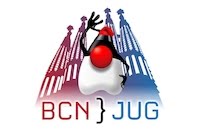| Talk in English |
This new year 2014 we start with amazing meetings !!!
Now it's turn of an introduction and a workshop of Apache Camel by the hand of one of the main committers for this Apache project and also the author of the book "Camel in Action"..... Mr Claus Ibsen.
He is a Principal Software Engineer working for Red Hat specializing in the enterprise integration space. Claus is the most active contributor to Apache Camel and is very active in the Camel community. He hang out on the Camel mailing lists, irc-room and often blogs about Camel.
Prior to joining Red Hat, Claus has worked with integration in all sorts for the last decade.
"Apache Camel is a versatile open-source integration framework based on known Enterprise Integration Patterns. Camel empowers you to define routing and mediation rules in a variety of domain-specific languages, including a Java-based Fluent API, Spring or Blueprint XML Configuration files, and a Scala DSL. This means you get smart completion of routing rules in your IDE, whether in a Java, Scala or XML editor."
Session 1 : Presentation ( Friday 24 ) :
This session will teach you how to get a good start with Apache Camel. We will introduce you to Apache Camel and how Camel its related to Enterprise Integration Patterns. And how you go about using these patterns in Camel routes, written in Java code or XML files.
We will then discuss how you can get started developing with Camel, and how to setup new projects from scratch using Maven and Eclipse tooling.
This session includes live demos that show how to build Camel applications in Java, Spring, OSGi Blueprint and alternative languages such as Scala and Groovy. You will also hear what other features Camel provides out of the box, which can make integration much easier for you.
We also take a moment to look at web console tooling that allows you to get insight into your running Apache Camel applications, which has among others visual route diagrams with tracing/debugging and profiling capabilities.
Before opening up for QA, we will share useful links where you can dive into learning more about Camel.
 |
| Reserve your Ticket !!!! |
Session 2 : Workshop ( Saturday 25 ) :
We would start with playing with a few of the out of the box Apache Camel examples, and get them into your IDE of choice, and then be able to edit the source code a bit, and see the changes in action etc.
Then move on to create a new project from scratch, and it can be something with REST or the likes, to build a mini app.
If there is people in the audience who have tried OSGi we would try out OSGi on Karaf / ServiceMix / Fuse etc.
Requirements :
- JDK 7
- Maven 3.0.4 ( we have had some problems building with 3.1.0 )
- IDE such as Eclipse JUNO or JIDEA.
- Tomcat 7.0.50 or upper
- Apache Camel - the latest 2.12.2 release - just the binary release.






